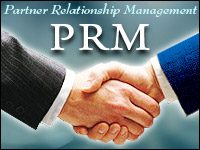
I have been studying sales forecasting and forecasting tools a lot recently, and I have come to the conclusion that we need better tools as well as better ways of using them.
There is a lot that can be said about forecasting, its current state and how to improve it, and I don’t want to leave anything out but I will try to be brief. First off, how we forecast says a lot about our views on economics. Given that most of us are not economists, our views of the economy are most likely derived from what we see and hear on a daily basis, much like our view of the weather.
For over 30 years, our view of economics has been increasingly colored by the ascendant views of the New or Neo-Classical school of economics. To over simplify, it is a view that goes back to Adam Smith, of supply and demand and a belief that economics is a hard science governed by equations as rigorous as Newtonian physics — wishful thinking, I’m afraid.
The most germane idea for our purposes is Say’s Law. Say was a French economist, very much in the Classical school, who said that “production creates its own demand” and from that we derive the famous supply side economics of the last 30 years. Supply side economics corresponded nicely with another phenomenon in our world: the introduction of the CPU chip in 1968 and the cascade of new products that ensued over the coming 40 years — roughly the high-tech era.
Say and Moore
Increasing CPU power followed Gordon Moore’s famous dictum, now Moore’s Law, of increasing CPU power and decreasing cost, and it created a special circumstance that governed supply and demand for technology goods. Moore’s Law made Say’s Law work like a charm. A corollary to Say is that all markets clear, i.e. all supply is eventually absorbed at some price — but maybe not a premium price.
Moore’s Law ensured that a fresh supply of technology goods that superseded the earlier generation would arrive and drive demand, thus ensuring Say’s Law would operate as advertised. However, if Say’s Law requires something like Moore’s Law to operate smoothly, then it must be said that Say’s Law is a special case, not an iron-clad law of economics.
Sales and Cycles
What’s that got to do with sales forecasting? Quite a bit. In the special case of selling into a market with undiminished demand, sales forecasting need not be a lot more complicated than determining where we are in the sales cycle. If we’re 90 percent through the cycle, we ask for the order and there is a reasonable chance that we will get the business — no guarantee, but a reasonable chance.
It hardly matters that our 90 percent is not really a probability derived statistically but really just a milestone in a process. In an expanding market, there are enough deals percolating that reasonably diligent effort will result in on-quota performance. However, on-quota performance is not what it once was, and forecasting is in disrepute in many places.
According to Jim Dickey and Barry Trailer at CSO Insights, only about 58 percent of salespeople manage to make or exceed quota. Also, according to my research less, than 10 percent of sales forecasts have an accuracy of 90 percent; the rest aren’t worth the time and effort it takes to compile them.
Playing the Zero-Sum Game
What’s happening to sales forecasting is not surprising. With Moore’s Law slowing down and with so many formerly new market niches filled with products, we are transitioning from an era of expanding markets to one of zero-sum conditions. In a zero-sum situation, if you are going to win business, you need to do it by displacing another product. If you are a customer in a displacement game, it is always easy to do nothing and wait for a better offer and continue using an existing product that might not have all the bells and whistles you want but fills the need nevertheless.
A zero-sum economic environment has a lot of uncertainty in it. You might use the words “uncertainty” and “risk” interchangeably, but they are not the same. Risk is something that is unknown but knowable. If a deal forecast is at risk, a sales representative — frequently at the urging of the sales manager — can ask more questions, get more data, and piece together an answer. There are many issues in sales that are simply unknowable or mostly unknowable — for example, the details of the bid your competition makes.
When uncertainty — not just risk — enters the picture, our forecasting paradigm that relies on milestones in the sales process becomes useless. We need better tools if we are to forecast in the face of uncertainty, and those tools exist, but few of us have taken them up yet. For example, prudent managers might start with the territory planning process. How much white space is in the territory? What percentage of that white space is likely to churn this year? What is the overall economic forecast? Given our market share, what is the probable share of that white space that we can capture? Is that enough to sustain quota for one or more people? How should we incentivize them?
Sales forecasting will always be an inexact science, but we can do better than we are currently. We could persist in basing our forecasting ideas on Say’s Law, but inevitably it is a race to the bottom, to pure competition on price. The airlines do that, but none of them make any money.
Denis Pombriant is the managing principal of the Beagle Research Group, a CRM market research firm and consultancy. Pombriant’s research concentrates on evolving product ideas and emerging companies in the sales, marketing and call center disciplines. His research is freely distributed through a blog and Web site. He is working on a book and can be reached at [email protected].





















































